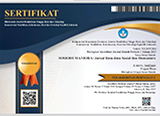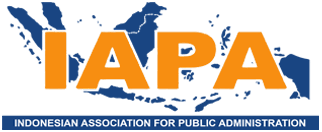THE MEANING OF SUNDA CULTURAL CONSTRUCTION FOR JAVANESE INDIVIDUALS IN BANDUNG
Abstract
The aim of this study was to investigate how Javanese individuals in Bandung perceive and apply the Sundanese culture, otherwise known as Kasundaan. We utilized a qualitative research approach, employing phenomenology, and interviewed seven Javanese informants with Kasundaan experience in their daily lives. Our data collection methods included interviews, observations, documentation, and literature studies. This study revealed that there was an extrinsic and Intrinsic Motivating Aspects as well as aspects of hope that motivated Javanese individuals in applying Kasundaan. Family environment, social environment, and the natural environment played a very big role in the formation of the meaning of Kasundaan on the Javanese and Chinese individual subjects of this research through their cultural literary experience in their lives. Being a Sundanese, for the research subjects was interpreted philosophically as a perspective and “nyunda” mindset and manifested in the form of a real contribution to the Sunda. This interpretation gives rise to self meaning of the Javanese individual in being a Sundanese, namely the self that explores Sundanese cultural knowledge and the self as a preserver of Sundanese culture.
Keywords
Full Text:
PDFReferences
Basrowi, & Sukidin. (2002). Metode Penelitian Kualitatif: Perspektif Mikro. Surabaya: Insan Cendikia.
Bruner, E. M. (1974). The Expression of Ethnicity in Indonesian. In Abner Cohen (Ed.), Urban Ethnicity. London.
Creswell, J. W., & Poth, C. N. (2018). Qualitative Inquiry & Research Design, Choosing Among Five Approaches (4th ed.). Los Angeles: SAGE Publications Inc.
Danadibrata, R. A. (2006). Kamus Basa Sunda R.A. Danadibrata. Bandung: Kiblat Buku Utama & Unpad.
Darmastuti, R., Bajari, A., Martodirdjo, H. S., & Maryani, E. (2016). Gethok Tular, Pola Komunikasi Gerakan Sosial Berbasis Kearifan Lokal Masyarakat Samin di Sukolilo. Jurnal ASPIKOM, 3(1), 104–118. https://doi.org/10.24329/ASPIKOM.V3I1.103
Fahrullah, T. A., Kosasih, A., Rohmayani, Y., & Mahdi, S. (2022). The Local Wisdom of the Sundanese-People on Culture, Language, and Arabs in Sumedang District. Sosiohumaniora, 24(3), 313–323. https://doi.org/10.24198/SOSIOHUMANIORA.V24I3.39628
Jorgensen, D. L. (1990). Participant Observation, A Methodology for Human Studies. Applied Social Research Methods Series Volume 15. California: Sage Publications.
Kemdikbud, B. P. dan P. (2017). Kamus Besar Bahasa Indonesia (5th ed.). Jakarta: Kementerian Pendidikan dan Kebudayaan.
Moleong, L. J. (2011). Metode Penelitian Kualitatif. Bandung: PT. Remaja Rosdakarya.
Rosidi, A. (Editor). (2003). Apa Siapa Orang Sunda. Bandung: Kiblat Buku Utama.
Schutz, A. (1967). The Phenomenology of Social World (T. by G. W. A. F. Lehnert, ed.). Illionis: Northwestern University Press.
Suryalaga, H. (2009). Kasundaan Rawayan Jati. Bandung: Yayasan Nur Hidayah.
Yasir, Y., Firdaus, M., & Awza, R. (2023). Environmental Communication Patterns Based on Local Wisdom in Management of Lubuk Larangan in Subayang River. Sosiohumaniora, 25(1), 60–70. https://doi.org/10.24198/SOSIOHUMANIORA.V25I1.41044
DOI: https://doi.org/10.24198/sosiohumaniora.v26i1.50196
Refbacks
- There are currently no refbacks.
Copyright (c) 2024 Sosiohumaniora

This work is licensed under a Creative Commons Attribution-ShareAlike 4.0 International License.
Sosiohumaniora Indexed By:
 Creation is distributed below Creative Commons Attribution-ShareAlike 4.0 International License.
Creation is distributed below Creative Commons Attribution-ShareAlike 4.0 International License.
Published By:
Faculty of Social and Political Sciences, Universitas Padjadjaran
Dean's Building 2nd Floor, Jalan Ir. Soekarno Km. 21 Jatinangor, Sumedang 45363
Email: jurnal.sosiohumaniorafisip@gmail.com

















